Know Your Fish
Our most popular sport fish are within easy reach of most fishermen. Whether chasing big game, hunting light with a kayak, or lining the wharf looking for trevs, snapper and kingies, Houhora has it all. Grab a charter or just bring your own gear for some exciting times.
New Zealand offers some of the most spectacular sport fishing opportunities in the world. Hosting a wide variety of different game fish, that often reach their maximum size in our waters, at a time when the weather is conducive to hitting your favourite spots. The following is a brief summary of our more popular sport fish including where and when to target them.
Striped Marlin
This is probably our most recognized game fish and the one that put New Zealand on the map as a world-class marlin fishery. We host the largest striped marlin in the world as attested by the stranglehold we have on world records for the species in almost every line class.
In the summer months, striped marlin are abundant throughout the top half of the North Island. The east coast gets more pressure due to the more sheltered ports and conditions, but a large number of fish also run down the west coast.
Hot spots are the Bay of Plenty, the entire northeastern coast from Tutukaka through to North Cape and the Three Kings islands. In the last ten years the Middlesex and King banks off the Three Kings have built a reputation as the premier spots to target trophy striped marlin. From February through to late May they congregate in big numbers to feed on the masses of bait fish. It is possible to have over ten shots a day at fish that grow in excess of 200kg ( 440.925 lb) where 80-120kg fish are considered average.
Many anglers, even after multiple fishing expeditions, can find it difficult to distinguish a striped marlin from a blue. This is because blue marlins also have subdued stripes on their body that can confuse anglers. The prime distinguishing feature is the dorsal fin of these fish. If it is a blue marlin, the dorsal fin will not be taller than half the depth of the fish’s body. If it is a striped marlin, the dorsal fin will be as tall as the entire depth of the fish’s body. So, when the marlin pops up, check the length of the dorsal fin and if you notice a taller fin then that is definitely a pretty stripey.
The next distinguishing feature is the body shape. A blue marlin will have a rather rounded body unlike the striped marlin, which has a rather flattened body when compared to the blue. As explained by the expert, if you cut both the marlin into halves, the cross section from the blue marlin will look more rounded than that of the striped. The striped marlin will have a cross section that will look more similar to the shape of an egg i.e. oval.
The final feature that clearly distinguishes both marlin species from each other is the shape of the jaw. The blue marlin has a short and broad lower jaw, whereas the striped marlin’s lower jaw is narrower and pointed.
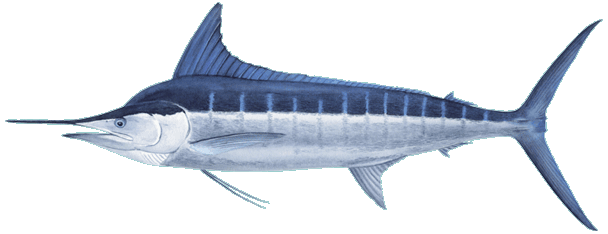
Blue Marlin
Catch data has shown that blue marlin are becoming a lot more common in New Zealand waters making them a desirable target game fish.
The Three Kings, North Cape and the Northland coastline are all hot spots and a good run of blues can be expected off the East Cape during a short time frame, usually around February.
Their average size is usually around the 200kg ( 440.925 lb) mark but much bigger fish are frequently encountered and occasionally landed. In 1998 a 456kg (1005.31 lb) specimen was taken off North Cape.
Blue marlin are aggressive feeders, so if you are planning a fishing trip to New Zealand, look up a local Charter boat with an experienced captain so you have the best possible chance of bringing that fish on board.
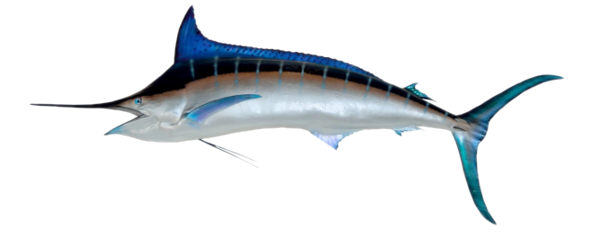
Black Marlin
Black marlin can be encountered throughout the summer months around the upper half of the North Island coastline.
They are often found in closer than the other species. Most are found off the Northland coast and Bay of Plenty, especially off Mayor Island, White island, Whale Island and the Motu river mouth. These are often very large fish and although no granders have been taken, some have gone very close and numerous fish over 350kg (771.618) have been caught.
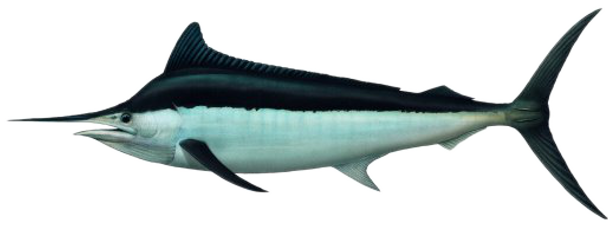
Broadbill Swordfish
Broadbill catch numbers have developed significantly over the last ten years, particularly with recreational anglers having newer techniques like daytime dropping of deep baits.
Charter boats are far better equipped to get out to the deep water where these fish abound when the weather is right.
Swordfish can be caught year round off our entire coastline but the more popular spots are the canyons off the Northland coast and the Three Kings. These fish grow very large with the average size normally between 150-250kg. (330.693 – 551.156 lb)
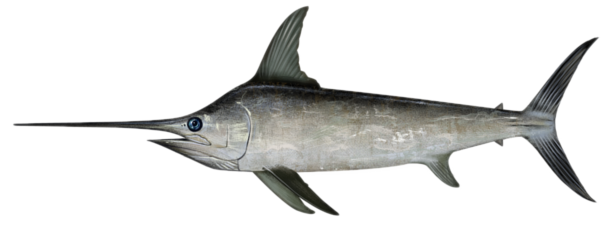
Yellowfin Tuna
They were particularly common in the Bay of Plenty where they herd great schools of baitfish into ‘meatballs’ which made for spectacular fishing.
The fish averaged around 20-35kg but weights tended to fluctuate from season to season. The bigger fish would show early on in December and January with 50-60kg ( 132+ lb) fish seen as fairly common.
Those early fish were normally taken trolling, but as the season progressed and the ‘meatballing’ kicked off around February and March, anglers tended to switch to live baits and chunking techniques. Further north, yellowfin were often caught in good numbers as a by-catch when trolling for billfish. Large numbers of tuna are seen around Noth Cape, Cape Karikari and in general the Far North coastline.
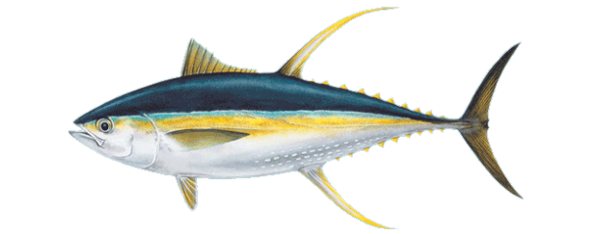
Bluefin and Bigeye Tuna
Both species are available year round off the entire coastline they are normally well offshore.
In the last few years anglers have discovered that bluefin have been showing consistently in good numbers in the summer off the southwest coast of the South island. They can be caught relatively close to shore due to the proximity of deep water and although these fish aren’t huge by bluefin standards there have been plenty of fish caught over the 60kg ( 132+ lb) mark. Commercial operators target bluefin and bigeye off the west coast of the South Island, East Cape, the Northland coast and the Three Kings.
Another catch worthy of noting was the landing of three huge bigeye on Bay of Islands charter boat Predator in 1997, following a quadruple strike. The fish were caught off North cape and weighed 121kg, 116kg, and 114kg respectively.
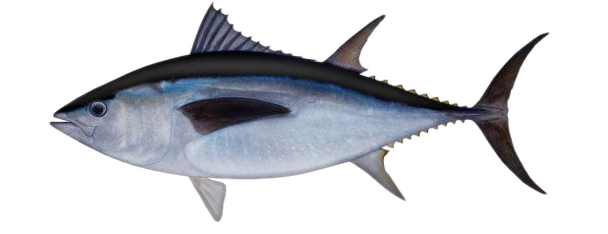
Albacore Tuna & Skipjack Tuna
During the summer months these fish can be found in big schools all around the north eastern coastline and the entire length of the west coast.
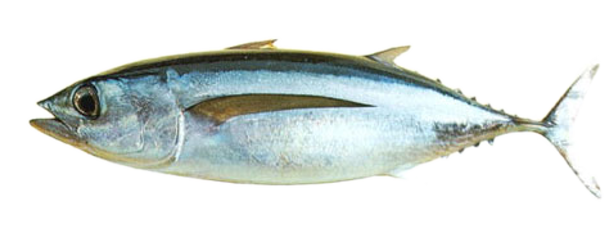
Yellowtail Kingfish
This is another species that puts New Zealand on the map as a major sport fishing destination. Kingies reach their maximum size in New Zealand with almost all world records coming from our waters.
The all tackle world record stands at 52kg (114.64 lb), a size of fish that is held equally in both 15 and 24kg line classes. These big powerful fish are relatively plentiful and easy to target, but landing them is another story altogether as they are virtually unstoppable and normally inhabit relatively foul areas.
The hot spots are the Three Kings islands, White island and the Ranfurly bank off East Cape. They are found consistently throughout the top half of the North Island in good numbers and as far south as the Marlborough Sounds at the top of the South Island. They can be caught year round with winter fish tending to be less common, but generally larger. Summer is the best time to target kingfish. They are usually found around rocky headlands, reefs and deepwater pinnacles, particularly those that are exposed to reasonable tidal current. With light craft and surfcasting these fish are available to anyone who is looking for a fighting fish within easy reach.
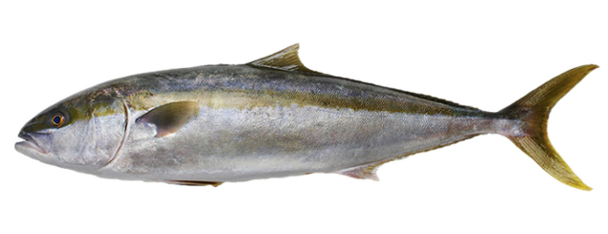
Snapper
Surfcasting, rock fishing or boat these are a kiwi favourite, both as a catch and for the table.
They are found consistently around the entire North Island but are harder to find the further south you go. The average size fish are around 2-3kg, but the really big specimens get up to 15kg and can put up an impressive fight. The hot spots are Nelson and the Marlborough Sounds in the South Island and from Hawkes Bay right around the top to Taranaki in the North Island. Snapper will be found on almost every reef, harbour and channel and are just as likely to be taken from the shore as from a boat. Fishing the Far North provides you with great snapper fishing through most of the year where it gets a bit harder to catch them south once the cold sets in.
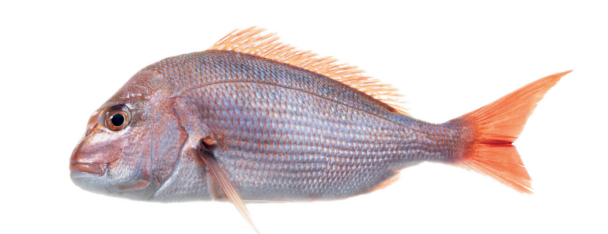
Kahawai
The kahawai is widespread throughout New Zealand and will be found from estuaries to the outer islands.
This sleek fish has an average size between 40-50cm long, which would weigh around the 2-3kg mark. Their tremendous fighting ability has earned them a reputation as a top light tackle game fish, especially on salt-water fly. Any light fishing tackle will ensure they give you a run for your money. They can be found year round and will be enticed by plenty of berley. They make for great family fishing and are the most common live bait used for larger game fish.
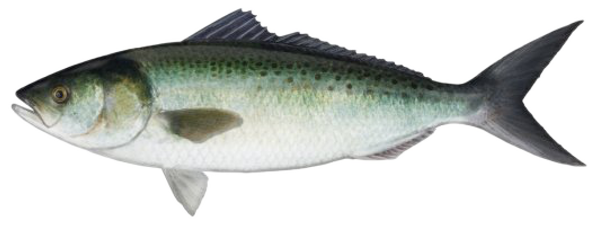
Trevally
Trevally has to be one of the top light tackle sportfish. They are found consistently around the North Island and at the top of the South Island.
They will be found throughout different water levels from shallow bays right through to great surface schools that are feeding on krill. They are more predominant in the summer and warm water environments. This top eating fish has an average size that will range from 2-4kg and they will put up a powerful fight on lighter gear, they will fight to the very end and with soft lips are easy to lose.
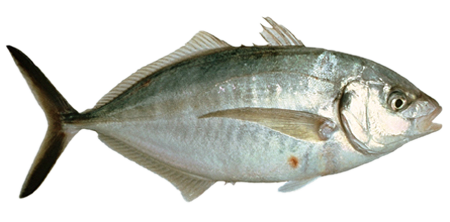

Houhora Big Game & Sport Fishing
New Zealand's Most Northern Fishing Club
Location
4046 Far North Road, Pukenui
Email: admin@houhorafishingclub.co.nz
https://www.facebook.com/onebasenz
Sand Bar Restautant Enquiries Phone:
094097755
 Admin Login
Admin Login